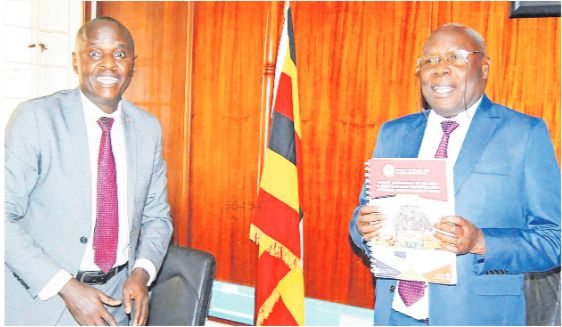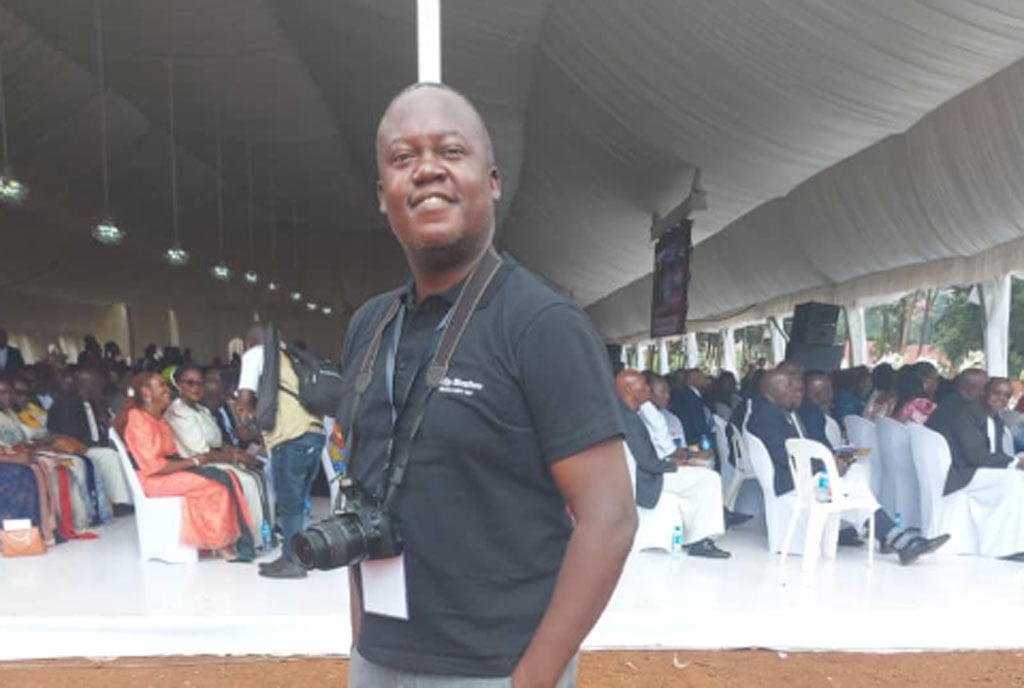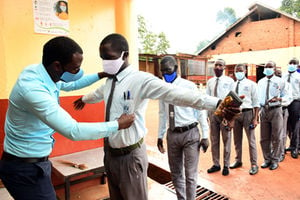Prime
Govt opens up three new areas for oil exploration

State Minister for Energy Sidronius Okasaai Opolot (right) receives a report on petroleum exploration from Mr Frank Mugisha, the assistant commissioner for petroleum exploration, in Kampala on November 14, 2024. PHOTO | PHILIP WAFULA
What you need to know:
- The Ministry of Energy and Mineral Development has opened up three new areas or frontier basins for petroleum activities spanning 17,244 square kilometres across the country.
The Ministry of Energy says opening up new areas will, among others, contribute to the sustainability of oil production.
The Ministry of Energy and Mineral Development has opened up three new areas or frontier basins for petroleum activities spanning 17,244 square kilometres across the country.
These include the Moroto-Kadam Basin in Moroto, Napak, Nakapiripirit, Katakwi, Bukedea, Kapchorwa, Kween, Bulambuli and Kumi districts, with aerial coverage of 5,672 square kilometres.
Others are Kibaale, Hoima, Masindi, Buliisa, Kakumiro and Kagadi districts (3,741km2), and the Lake Kyoga Basin (7,831km2), covering Amolatar, Kaberamaido, Kwania, Dokolo, Buyende, Apac, Serere, Soroti, Pallisa, Ngora and Nakasongola districts.
“Opening up these areas for petroleum exploration presents the country with enormous opportunities to increase the petroleum resource base and ultimately the revenues for the social and economic development of the country,” the ministry’s Permanent Secretary, Ms Irene Pauline Batebe, said in Kampala yesterday.
Ms Batebe noted that the country is endowed with numerous sedimentary basins such as Albertine Graben, the Moroto-Kadam Basin, Lake Kyoga Basin, Hoima Basin, Lake Victoria Basin and Wamala Basin. However, to date, the Albertine Graben has been the most investigated and, therefore, more prospective compared to the other basins.
According to Ms Batebe, impact assessments were undertaken by M/s Air Wave Earth (AWE) Limited in 2020 with funding from the Norwegian Oil for Development Programme (OfD) under Phase III of the Strengthening the Management of Oil and Gas Programme (SMOGP).
The impact assessment reports, together with the recommendations, she added, were presented and approved by the Cabinet in September 2023, and were also submitted to Parliament as required by the Act.
To address the imminent risk of a shortage of petroleum resources, Ms Batebe said the government is conducting further exploration by licensed companies and opening up frontier basins for additional exploration.
Ms Batebe’s remarks were contained in a speech read by Mr Frank Mugisha, the assistant commissioner for Petroleum Exploration at the ministry.
State Minister for Energy Sidronius Okasaai Opolot, said the government is putting in place all the required infrastructure necessary for oil and gas production by 2026.
He added that the global outlook and drive are to fight climatic negative effects by reducing greenhouse gas emissions and reaching net zero carbon emissions.
He added: “That is a reason why the government formulated the National Oil and Gas Policy (2008), and attendant legislation entailing the Petroleum (Exploration, Development and Production) Act, 2013, the Petroleum (Refining, Conversion, Transmission and Midstream Storage) Act, 2013, and associated regulations relating to the environment, and water, among others.”
Section 47(2) of the Petroleum (Exploration, Development and Production) Act, 2013 (the Act) requires that before an area is opened up for petroleum exploration, an evaluation of preliminary geological, geophysical and geochemical data is conducted.
Background
Commercial quantities of crude oil and gas were confirmed in the Albertine Graben in 2006. Further, concerted exploration and appraisal campaigns by the licensed companies have led to today’s resource base estimated at 6.5 billion barrels of oil, of which 1.4 billion barrels are recoverable and about 500 billion cubic feet of gas resources.





